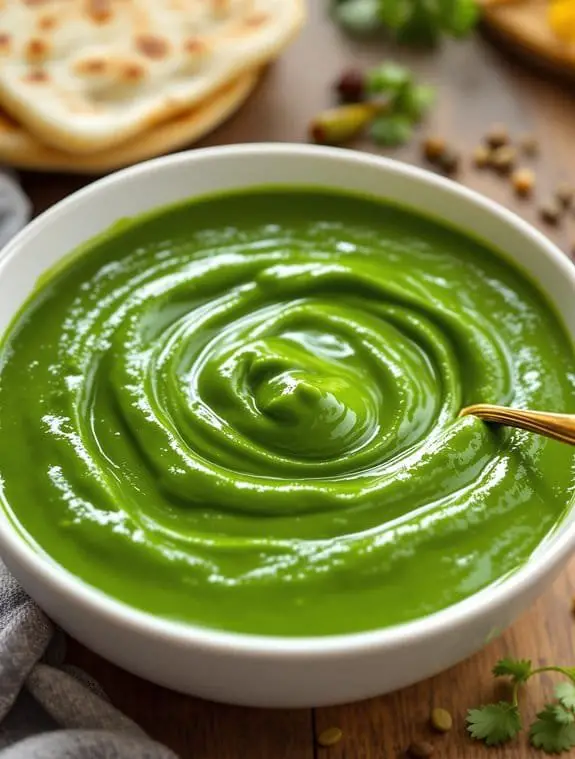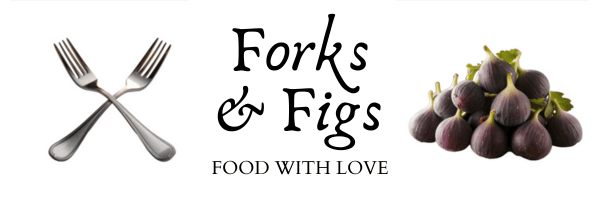Creamy Indian Saag Sauce: A Restaurant-Style Recipe

I’m going to share something that’ll transform your weeknight dinner game forever – and trust me, it doesn’t involve ordering takeout for the third time this week. This creamy Indian saag sauce captures all those rich, velvety flavors you crave from your favorite restaurant, but here’s the twist: you can master it in your own kitchen without breaking a sweat or your budget.
Why You’ll Love this Creamy Indian Saag Sauce
Three reasons make this saag sauce absolutely irresistible, and I’m betting you’ll discover even more once you taste it.
First, it’s restaurant-quality without the restaurant price tag. You know that velvety, vibrant green sauce that costs fifteen bucks at your favorite Indian spot? This recipe nails that exact texture and flavor.
Second, it’s surprisingly simple. No fancy equipment needed, just basic spices you probably have lurking in your pantry.
Even my most kitchen-phobic friends can master this.
Third, it transforms everything it touches into something special. Plain chicken becomes gourmet.
Boring vegetables become craveable.
What Ingredients are in Creamy Indian Saag Sauce?
The beauty of saag sauce lies in its simplicity, requiring just a handful of fresh ingredients that work together to create something magical. Most of these items are probably sitting in your kitchen right now, waiting to be transformed into this creamy, restaurant-quality sauce.
What I love most about this ingredient list is how accessible everything is. No exotic spices that cost more than your monthly Netflix subscription, no special ingredients that require a trip to three different stores. Just honest, everyday components that pack serious flavor.
Ingredients:
- 110g baby spinach leaves
- 3 green bird’s eye chillies
- 1 handful fresh coriander leaves
- 2 tablespoons oil
- 1 onion
- Fresh ginger
- Fresh garlic
- Turmeric powder
- Ground cumin
- Coriander powder
- Salt
Ingredient Considerations
Baby spinach works best here because it’s tender and wilts quickly, but regular spinach will do the job if that’s what you have on hand. The leaves should be fresh and vibrant, not those sad, wilted ones hiding in the back of your fridge.
Bird’s eye chillies bring the heat, but don’t panic if you can’t find them. Any small green chillies will work, or you can adjust the quantity based on your spice tolerance. I’m talking to you, person who thinks black pepper is spicy.
Fresh ginger and garlic make all the difference here. That pre-minced stuff in jars just doesn’t have the same punch. For the oil, any neutral cooking oil works perfectly, vegetable oil, canola oil, whatever you’ve got.
The spice trio of turmeric, cumin, and coriander powder forms the flavor backbone of this sauce. Make sure your spices aren’t older than your last relationship, fresh spices really do matter for the best flavor.
How to Make this Creamy Indian Saag Sauce

Making this creamy saag sauce is honestly one of those cooking experiences that makes you feel like a bit of a wizard. The transformation from simple ingredients to rich, velvety sauce happens right before your eyes, and it’s pretty magical every time.
Start with the Foundation
Heat your 2 tablespoons of oil in a large pan over medium heat. While it’s warming up, dice your onion into small pieces, nothing fancy here, just get them reasonably uniform so they cook evenly. Toss the onion into the hot oil and let it sauté until it turns golden and soft, which usually takes about 5-6 minutes.
While the onion is doing its thing, mince your fresh ginger and garlic. I’m talking really fine here, because nobody wants to bite into a chunk of raw garlic halfway through their meal. Add the minced ginger, garlic, and your 3 green bird’s eye chillies to the pan with the onions.
Layer in the Spices
This is where things start smelling absolutely incredible. Add your turmeric powder, ground cumin, and coriander powder to the pan. The recipe doesn’t specify exact amounts for these spices, but start with about half a teaspoon of turmeric, one teaspoon each of cumin and coriander powder, then adjust to taste.
Cook this spice mixture for just about 30 seconds to a minute, stirring constantly so nothing burns. You’ll know it’s ready when the spices become fragrant and start releasing their oils. If they start sticking to the pan, add a tiny splash of water.
The Spinach Magic
Now comes the fun part. Add your 110g of baby spinach leaves and that handful of fresh coriander leaves to the pan. It’s going to look like way too much greenery at first, like you’re trying to stuff a salad bar into a saucepan, but trust the process.
The spinach will start wilting almost immediately, shrinking down to a fraction of its original size. Stir everything together and cook until all the spinach is completely wilted and soft, which takes about 2-3 minutes. Season with salt to taste.
Blend to Perfection
Here’s where good saag sauce separates itself from mediocre saag sauce. Let the mixture cool slightly, then transfer everything to a blender or food processor. Blend until the sauce is completely smooth and creamy, no chunks or stringy bits in sight.
If the sauce seems too thick, add a tablespoon or two of water and blend again. You’re aiming for a consistency that’s creamy but not paste-like, something that will coat whatever you’re serving it with without being gloopy.
The final result should be a vibrant green sauce with a silky texture that looks like it came straight from your favorite Indian restaurant. And honestly, it probably tastes better because you know exactly what went into it.
Creamy Indian Saag Sauce Substitutions and Variations
While saag sauce traditionally calls for baby spinach, you’ve got plenty of wiggle room to make this recipe work with whatever greens are lurking in your fridge or whatever your taste buds are craving.
I love swapping in mustard greens for that authentic Punjabi bite, though fair warning – they’re assertive little things.
Kale works beautifully too, just massage those tough leaves first.
Swiss chard? Absolutely.
Even frozen spinach saves the day when fresh greens aren’t happening.
For heat levels, dial back those bird’s eye chillies to jalapeños if you prefer gentle warmth over fire-breathing drama.
What to Serve with Creamy Indian Saag Sauce
Now that you’ve perfected your saag sauce, what happens next? I love pairing this emerald beauty with fluffy basmati rice – it’s like a cozy green blanket for your grains.
Naan bread? Absolute perfection for scooping up every last drop. Rotis work too, though they’re slightly less dramatic.
Want protein? I’d add paneer cubes, tender chicken pieces, or chickpeas. They’ll swim happily in that creamy spinach goodness.
Don’t forget the sides: cooling raita, pickled onions, or crispy papadums add nice texture contrast.
Trust me, your dinner table will look restaurant-worthy.
Final Thoughts
There you have it – your ticket to restaurant-quality saag that’ll make your kitchen smell like the best Indian joint in town.
I’m telling you, once you nail this silky, emerald sauce, you’ll wonder why you ever settled for jarred versions that taste like sad, watery disappointment.
The beauty lies in that final blending step. Don’t skip it. That’s what transforms humble spinach into liquid velvet that clings perfectly to whatever you’re serving.
Now go forth and create some serious saag magic. Your taste buds will thank you.

Creamy Indian Saag Sauce
Ingredients
- 110 g baby spinach leaves
- 3 green bird’s eye chillies
- 1 handful fresh coriander leaves
- 2 tbsp oil
- 1 medium onion chopped
- 2 tsp fresh ginger minced
- 3 cloves garlic minced
- 1 tsp turmeric powder
- 1 tsp ground cumin
- 1 tsp coriander powder
- Salt to taste
Instructions
- Heat oil in a large pan over medium heat.
- Add chopped onion and sauté until softened and lightly golden, about 5-6 minutes.
- Add minced ginger, garlic, and green chillies. Cook for 1-2 minutes until fragrant.
- Add turmeric powder, ground cumin, and coriander powder. Cook for 30 seconds, stirring constantly.
- Add baby spinach leaves and cook until completely wilted, about 3-4 minutes.
- Remove from heat and let cool slightly.
- Transfer mixture to a blender along with fresh coriander leaves.
- Blend until completely smooth and silky in texture.
- Return to pan and reheat gently before serving. Season with salt to taste.
Notes
Nutrition
Frequently Asked Questions
Can I Freeze Saag Sauce for Later Use?
Yes, I’ll freeze saag sauce in portions using freezer-safe containers or bags. It’ll keep for three months. I’ll thaw it overnight in the refrigerator and reheat gently, stirring occasionally.
How Long Does Homemade Saag Sauce Last in the Refrigerator?
I’d store your homemade saag sauce in the refrigerator for up to four days. I’ll keep it in an airtight container and make sure it’s completely cooled before refrigerating it.
What’s the Difference Between Saag and Palak Curry Sauces?
I’ll explain the key difference: saag refers to any leafy green curry sauce, while palak specifically means spinach. So palak is actually a type of saag, but saag can include mustard greens or other leaves.
Can I Make Saag Sauce Without a Blender or Food Processor?
You’ll miss saag’s signature smooth texture without blending equipment. I’d suggest finely chopping spinach and mashing with a fork while cooking, though it won’t achieve that authentic restaurant-style consistency.
Why Is My Saag Sauce Bitter and How Can I Fix It?
Your saag’s likely bitter from overcooking the spinach or using too much turmeric. I’d add cream, yogurt, or a pinch of sugar to balance it. Next time, blanch spinach briefly and use turmeric sparingly.




